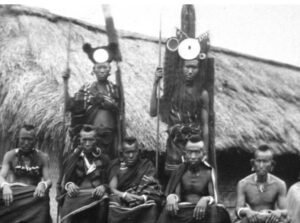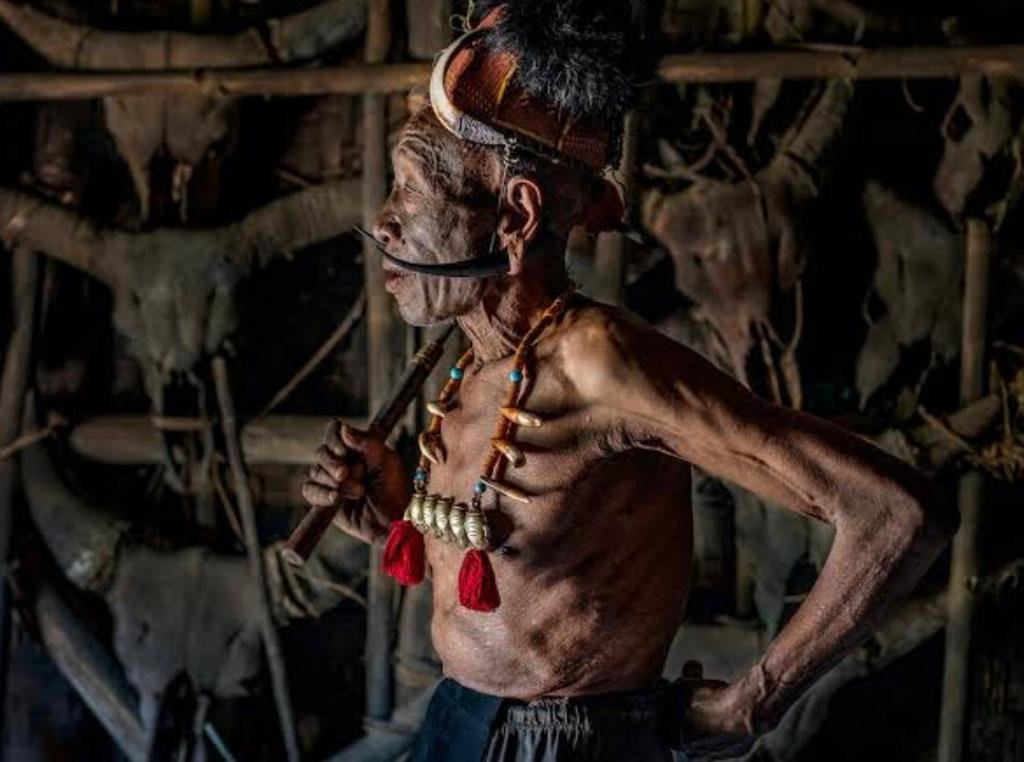The Naga tribes of Northeast India have a rich cultural heritage that dates back centuries. Unfortunately, one aspect of their history has often been sensationalized and misunderstood by outsiders—the practice of headhunting. For many years, the Nagas were erroneously associated with this gruesome practice, leading to negative stereotypes and misconceptions about their society. In this article, we will shed light on the truth about headhunting among the Nagas and debunk the myths surrounding this ancient tradition.
Historical Context

Headhunting was indeed practiced by certain Naga tribes in the distant past. It was a part of their ritualistic and warrior culture, but it is essential to recognize that this practice was not representative of all Nagas. Headhunting was localized, limited to specific tribes and regions, and was not a widespread phenomenon across the entire Naga community.
The practice of headhunting among the Nagas has a deep historical context that dates back centuries. It is essential to understand this historical background to gain insights into the significance of the practice and its eventual decline.
Tribal Societies and Warfare
The Nagas are a collection of several indigenous tribes, each with its own distinct customs, languages, and territories. These tribes lived in close-knit communities and were often engaged in inter-tribal warfare. In this context, headhunting served as a way to assert dominance and establish the valor of warriors within their respective tribes.
Cultural Significance

Headhunting was not an act of indiscriminate violence but a ritualistic and symbolic practice. It was often associated with ceremonies and festivals and held deep cultural significance for the tribes that practiced it. Taking the head of an enemy warrior was believed to bring power, prestige, and protection to the victorious tribe. It was also seen as a way to appease ancestral spirits and seek their blessings.
Rites of Passage
Headhunting was often tied to rites of passage, particularly for young warriors. Successfully obtaining an enemy head was considered a crucial milestone, signifying the transition from adolescence to adulthood. It was a test of courage, bravery, and skills in combat.
Relations with Neighboring Communities
The act of headhunting was closely linked to the territorial disputes and rivalries between Naga tribes and neighboring communities. It was seen as a way to establish dominance and assert territorial claims over resources such as land and hunting grounds.
Impact of Colonialism
The arrival of British colonial rule in the 19th century had a profound impact on Naga society. The colonial authorities viewed headhunting as a barbaric and primitive practice and sought to suppress it. They imposed punitive measures and missionary efforts that aimed to eradicate the practice and promote Christianity.
Transition to Modernity

As the influence of colonial powers and Christian missionaries grew, the practice of headhunting began to decline. Modern education and exposure to outside cultures also played a role in shaping the changing attitudes among the Nagas. Over time, the practice lost its relevance, and the traditional significance associated with headhunting began to wane.
Contemporary Naga Society

In the present day, headhunting is virtually non-existent among the Nagas. They have transitioned into more peaceful ways of life and have embraced modernity while also preserving their rich cultural heritage. The Nagas have become active participants in shaping the region’s political, economic, and social landscape.
Ritual and Symbolism
Contrary to popular belief, headhunting was not an act of random violence or savagery. For the tribes that practiced it, headhunting held deep ritualistic significance. It was often associated with ceremonies, harvest festivals, or as a rite of passage for young warriors. The heads were considered symbols of power, bravery, and protection for the tribe.
Decline and Abandonment
As societies evolve, so do their traditions. The practice of headhunting among the Nagas began to decline significantly with the arrival of British colonial rule in the 19th century. Missionary efforts and modern education also played a crucial role in the eventual abandonment of the practice. Today, headhunting is virtually non-existent among the Nagas, and they have embraced more peaceful ways of life.
Modern Naga Society
Present-day Naga society is far removed from the stereotypes associated with headhunting. The Nagas have transitioned into a more peaceful and culturally diverse community. They have a vibrant arts scene, with traditional music, dance, and crafts thriving alongside modern influences. Nagas are also known for their strong sense of community and hospitality, welcoming visitors to learn about their culture and traditions.
Naga Identity Beyond Headhunting
It is vital to view the Nagas through a broader lens and appreciate the complexity of their identity. They are a diverse group with over 20 major tribes, each possessing its own unique traditions, languages, and customs. The Nagas have made significant contributions to various fields, including literature, sports, and the armed forces. Reducing their identity solely to headhunting perpetuates a harmful stereotype that fails to recognize their many other accomplishments.
Promoting Cultural Understanding
As travelers and outsiders engage with the Naga communities, it is crucial to approach their culture with an open mind and a desire to learn. Understanding their history and traditions can lead to a more nuanced and respectful appreciation of the Nagas as a people. By debunking the stereotype of headhunting, we pave the way for genuine cultural exchange and a celebration of their rich heritage.
The historical context of headhunting among the Nagas reveals a complex and multi-faceted practice deeply embedded in their cultural beliefs and traditions. While headhunting was once a significant aspect of Naga society, it gradually lost its prominence with the advent of colonialism and modernity. Today, the Nagas have moved away from this practice and are known for their vibrant cultural diversity and contributions to various fields of art, sports, and academia. Understanding the historical context helps debunk the stereotype of headhunting and allows for a more accurate and respectful appreciation of the Nagas’ unique cultural heritage. The stereotype of headhunting among the Nagas is a remnant of the past that does not reflect the vibrant and diverse community they are today. It is essential to debunk this misconception and approach their culture with understanding and respect. By appreciating the complexities of their history and traditions, we can foster a more positive and accurate portrayal of the Nagas, one that does justice to their contributions to the tapestry of human culture.




